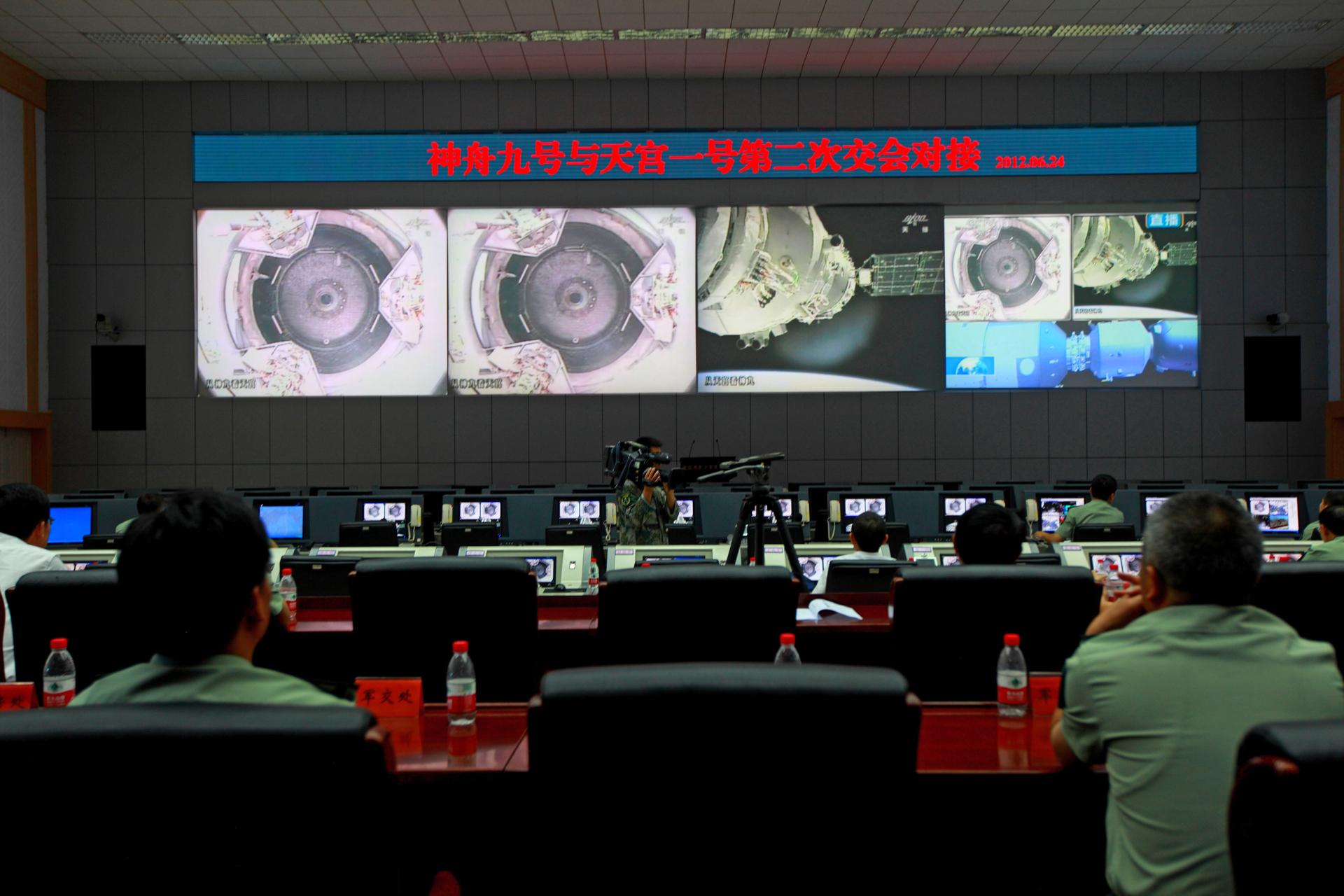China’s Shenzhou-9 astronauts manually dock spacecraft in orbit
Chinese technicians at the Jiuquan Space Centre monitor the Shenzhou-9 spacecraft as it prepares to link with the Tiangong-1 module just over a week into a manned space mission which includes China’s first female astronaut, following an automatic docking, on June 24, 2012.
China has completed its first ever manual docking of one spacecraft with another, joining an exclusive club of nations.
Astronauts on the Shenzhou-9 spacecraft docked with the Tiangong-1 lab module without relying on an automated system.
The docking was broadcast live on national TV, complete with images of "taikonauts" Jing Haipeng, Liu Wang and Liu Yang — China's first female astronaut — smiling after the docking, BBC reported.
The docking takes China a step closer to matching American and Russian exploits in space, and is seen as key to Beijng's aims of building of an orbiting space station by 2020.
The US and then Soviet Union completed their first manual dockings — used in the event of a failed automated docking — in the 1960s.
The exercise is risky, involving two objects revolving around Earth at thousands of kilometers per hour in the same orbit. The two spacecraft need to connect gently to avoid a catastrophic collision.
According to Xinhua: "It means China has completely grasped space rendezvous and docking technologies and the country is fully capable of transferring humans and cargo to an orbiter in space, which is essential for building a space station."
The flight of Shenzhou-9 was China's fourth manned space mission, according to the Associated Press.
Future missions could involve sending a man to the moon, the AP added.
More from GlobalPost: Tibetans in turmoil
The article you just read is free because dedicated readers and listeners like you chose to support our nonprofit newsroom. Our team works tirelessly to ensure you hear the latest in international, human-centered reporting every weekday. But our work would not be possible without you. We need your help.
Make a gift today to help us reach our $25,000 goal and keep The World going strong. Every gift will get us one step closer.
